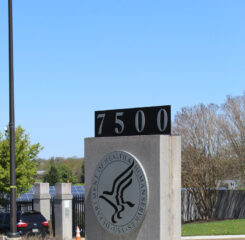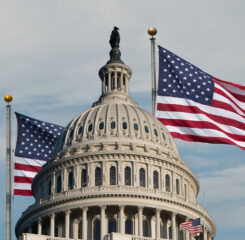Use of State and Local Relief Funds Expanded, Clarified
On January 6, the Department of the Treasury issued its final rule on the $350 billion state and local fiscal recovery funds programs. These funds were provided by Congress to state and local governments by the American Rescue Plan in 2021.
States and local governments were allocated the funds in 2021 and have been spending the funds at a brisk pace under the guidelines of a May 2021 interim final rule. The January 6 final rule provides some changes, clarification and flexibilities to the interim final rule.
One change provides an expanded set of households and communities that are presumed to be “impacted” and “disproportionately impacted” by the pandemic, thereby allowing recipients to provide responses to a broad set of households and entities without requiring additional analysis. Further, the final rule provides a broader set of uses available for these communities as part of COVID19 public health and economic response, including making affordable housing, childcare, early learning, and services to address learning loss during the pandemic eligible in all impacted communities and making certain community development and neighborhood revitalization activities eligible for disproportionately impacted communities.
Premium Pay
The final rule also offers more streamlined options to provide premium pay, by broadening the share of eligible workers who can receive premium pay without a written justification while maintaining a focus on lower-income and frontline workers performing essential work. Premium pay may be awarded to eligible workers up to $13 per hour. Premium pay must be in addition to wages or remuneration.
Aid to Nonprofits
The interim final rule also clarifies how state and local recipients can identify impacted nonprofits to help with loans or grants to mitigate financial hardship by looking at decreased revenue (e.g., from donations and fees), at increased costs (e.g., uncompensated increases in service need), at capacity to weather financial hardship, and at challenges covering payroll, rent or mortgage, and other operating costs.
Affordable Housing
The final rule also expands the types of communities that can use their funds for affordable housing development. “Treasury has determined that … the development of affordable housing to increase supply of affordable and high-quality living units are responsive to the needs of impacted populations, not only disproportionately impacted populations. This final rule reflects this clarification and builds on the objectives stated in the interim final rule to improve access to stable, affordable housing, including through interventions that increase the supply of affordable and high-quality living units, improve housing security, and support durable and sustainable homeownership,” the final rule says.
Broadband Infrastructure
The Coronavirus State and Local Fiscal Recovery Funds may be used to make necessary investments in broadband infrastructure, which has been shown to be critical for work, education, healthcare, and civic participation during the public health emergency. The final rule broadens the set of eligible broadband infrastructure investments that recipients may undertake
The full final rule is here, a summary of the final rule is here. Treasury’s main page for the Coronavirus State and Local Fiscal Recovery Funds program is here.

Most Recommended
October 15, 2025
 Shutdown Week Three: Impact of Ongoing Closure on Affordable Housing
Shutdown Week Three: Impact of Ongoing Closure on Affordable Housing
December 10, 2025
Fiscal Year (FY) Funding 2026
October 07, 2025
Immigrant Workforce Matching Program Brings Workforce Relief
Recently Added
December 23, 2025
 CMS Debuts Models: ACCESS, ELEVATE and LEAD
CMS Debuts Models: ACCESS, ELEVATE and LEAD
December 22, 2025
GAO Report: Ensuring Accessible Healthcare
December 19, 2025
House Moves Forward on Affordable Housing Reforms
December 19, 2025



